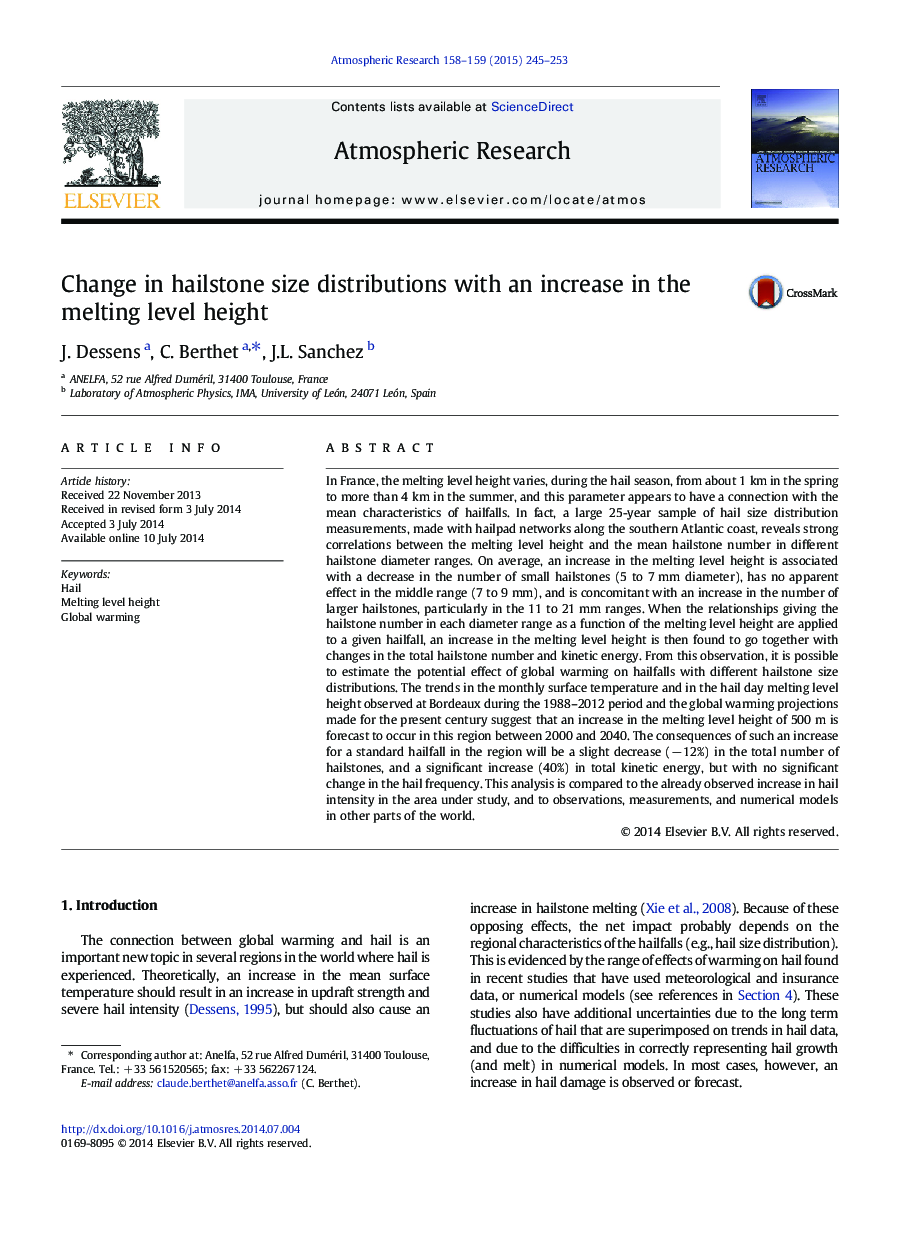| کد مقاله | کد نشریه | سال انتشار | مقاله انگلیسی | نسخه تمام متن |
|---|---|---|---|---|
| 6343319 | 1620515 | 2015 | 9 صفحه PDF | دانلود رایگان |
عنوان انگلیسی مقاله ISI
Change in hailstone size distributions with an increase in the melting level height
ترجمه فارسی عنوان
تغییر در توزیع اندازه گرانیت با افزایش ارتفاع ذوب می شود
دانلود مقاله + سفارش ترجمه
دانلود مقاله ISI انگلیسی
رایگان برای ایرانیان
کلمات کلیدی
تگرگ، ارتفاع سطح ذوب، گرمایش جهانی،
موضوعات مرتبط
مهندسی و علوم پایه
علوم زمین و سیارات
علم هواشناسی
چکیده انگلیسی
In France, the melting level height varies, during the hail season, from about 1 km in the spring to more than 4 km in the summer, and this parameter appears to have a connection with the mean characteristics of hailfalls. In fact, a large 25-year sample of hail size distribution measurements, made with hailpad networks along the southern Atlantic coast, reveals strong correlations between the melting level height and the mean hailstone number in different hailstone diameter ranges. On average, an increase in the melting level height is associated with a decrease in the number of small hailstones (5 to 7 mm diameter), has no apparent effect in the middle range (7 to 9 mm), and is concomitant with an increase in the number of larger hailstones, particularly in the 11 to 21 mm ranges. When the relationships giving the hailstone number in each diameter range as a function of the melting level height are applied to a given hailfall, an increase in the melting level height is then found to go together with changes in the total hailstone number and kinetic energy. From this observation, it is possible to estimate the potential effect of global warming on hailfalls with different hailstone size distributions. The trends in the monthly surface temperature and in the hail day melting level height observed at Bordeaux during the 1988-2012 period and the global warming projections made for the present century suggest that an increase in the melting level height of 500 m is forecast to occur in this region between 2000 and 2040. The consequences of such an increase for a standard hailfall in the region will be a slight decrease (â 12%) in the total number of hailstones, and a significant increase (40%) in total kinetic energy, but with no significant change in the hail frequency. This analysis is compared to the already observed increase in hail intensity in the area under study, and to observations, measurements, and numerical models in other parts of the world.
ناشر
Database: Elsevier - ScienceDirect (ساینس دایرکت)
Journal: Atmospheric Research - Volumes 158â159, 1â15 May 2015, Pages 245-253
Journal: Atmospheric Research - Volumes 158â159, 1â15 May 2015, Pages 245-253
نویسندگان
J. Dessens, C. Berthet, J.L. Sanchez,
